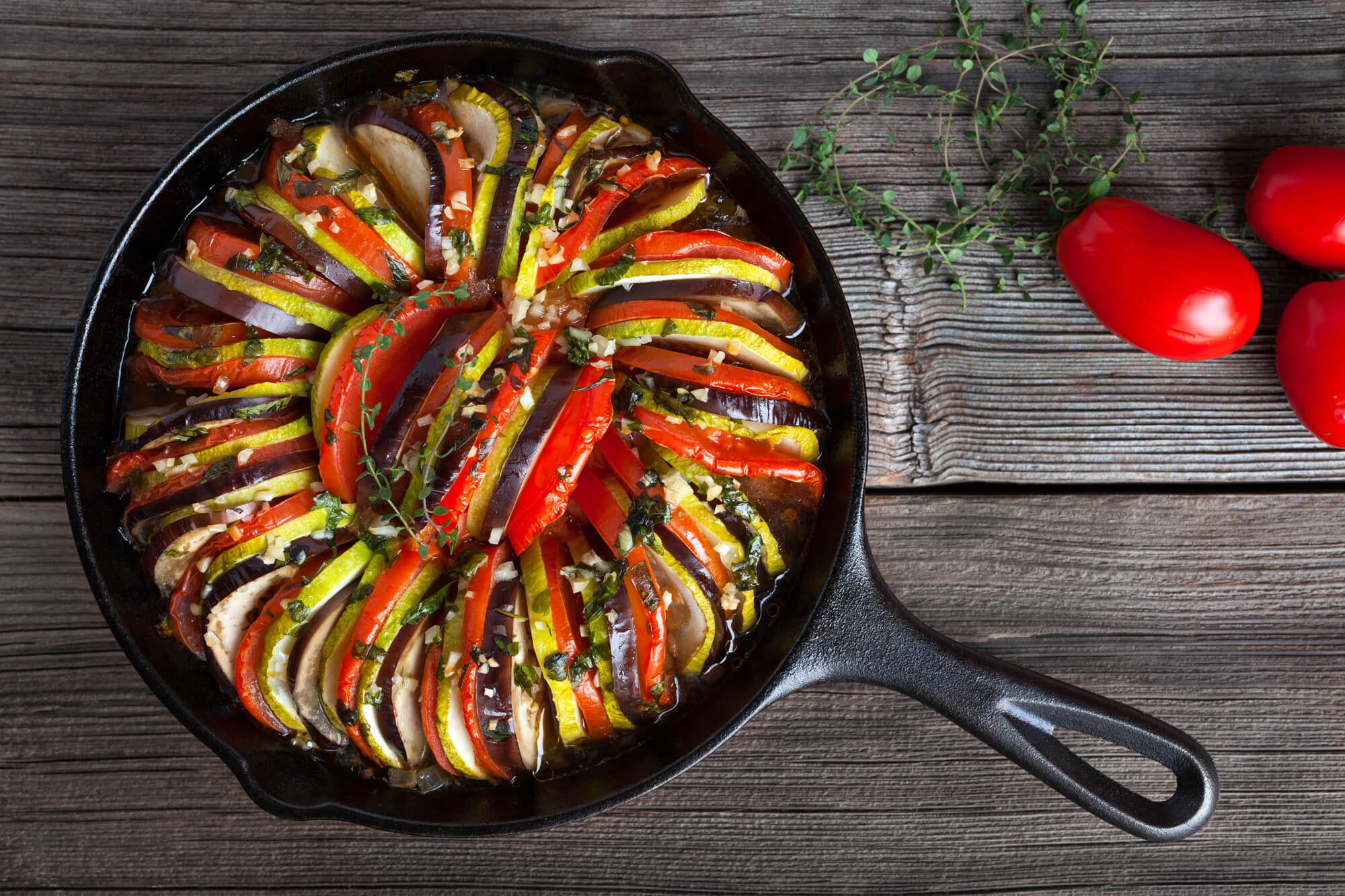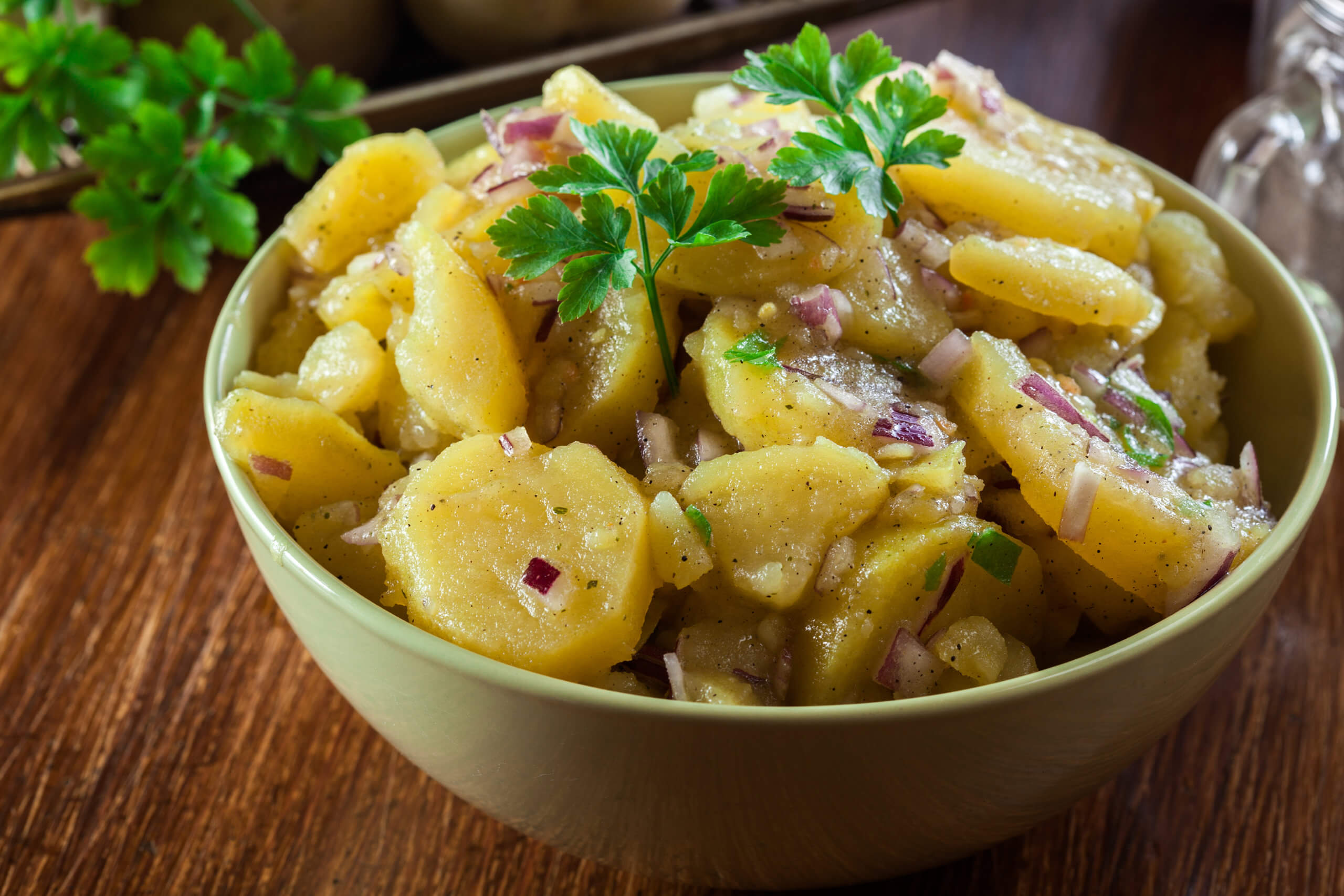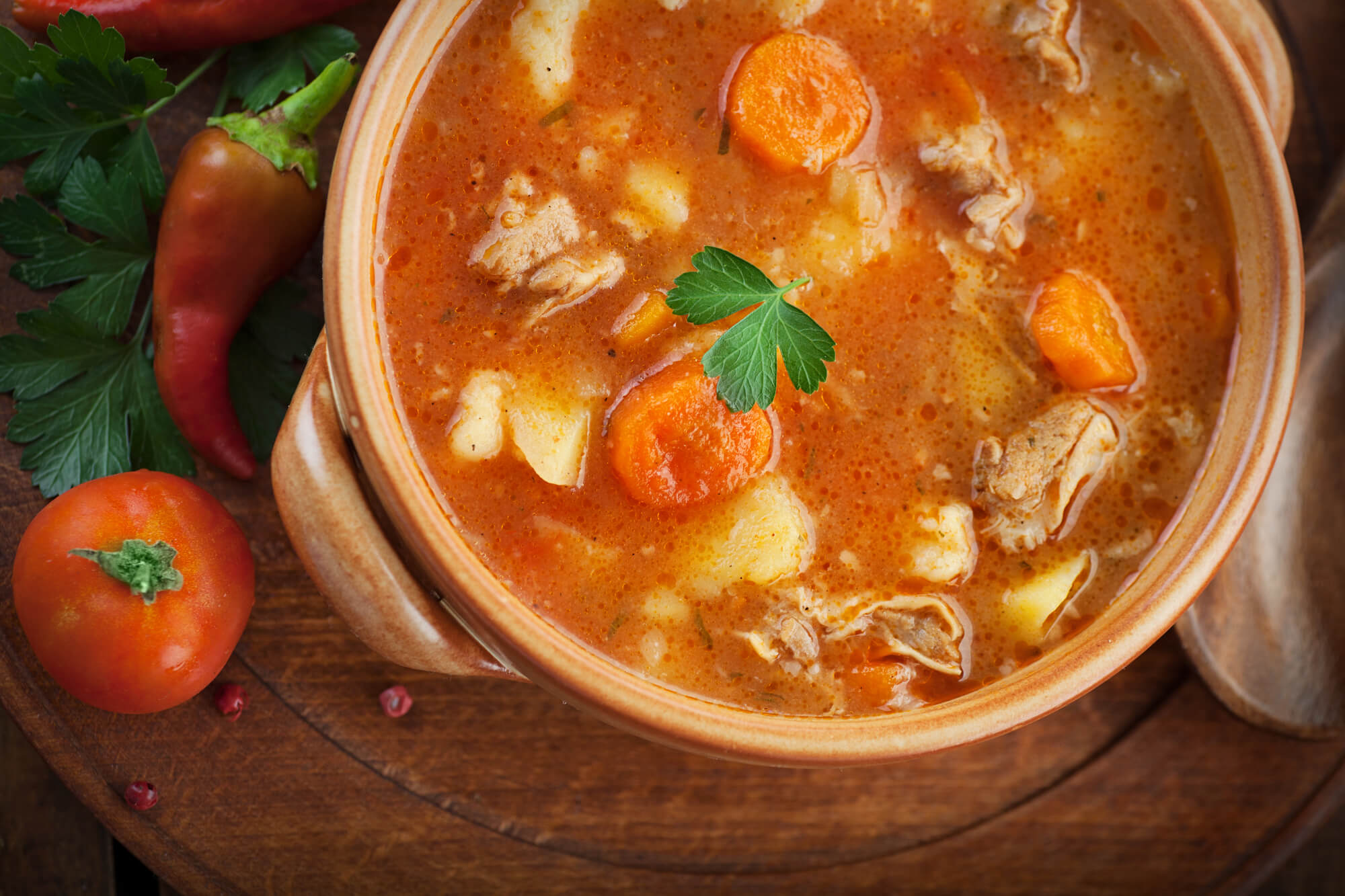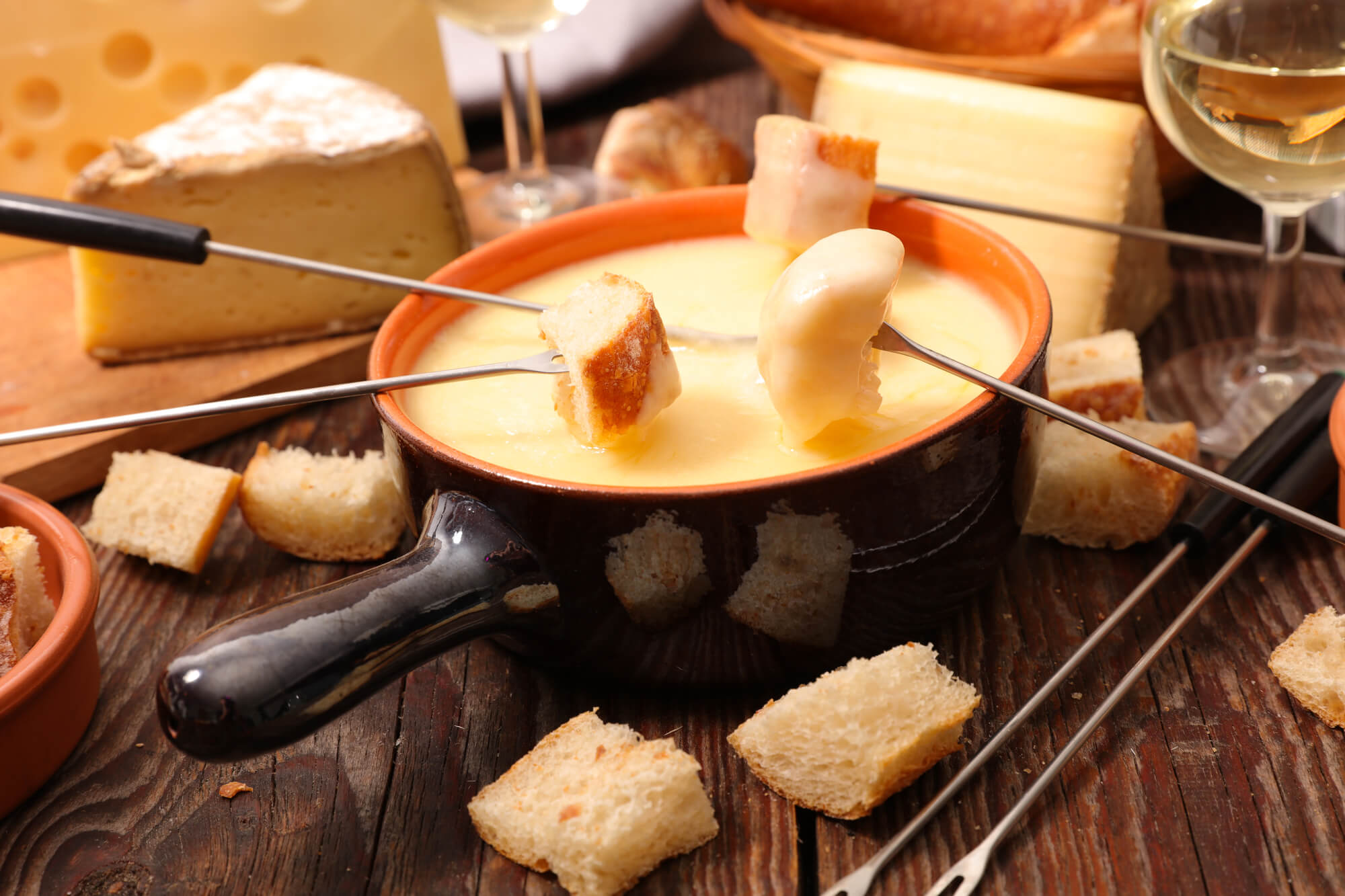Here is our take on the Ratatouille recipe by Ina Garten (Barefoot Contessa), which we think is a little easier. First, Garten’s recipe is excellent and delicious, but not exactly “easy” as it’s marked on the website based on the Ratatouille recipe not being complete until combined with another recipe of hers – Creamy Polenta.
What is Ratatouille?
Ratatouille is a classic French Provençal stewed vegetable dish that originated in the Provence region of southeast France. The dish is characterized by its use of fresh summer vegetables – typically tomatoes, zucchini, eggplant, peppers, and onions – that are sliced and stewed together in olive oil with garlic, herbs, and seasonings.
The name “ratatouille” comes from the French verb “touiller” which means “to stir up.” It refers to the act of tossing the chopped vegetables together before cooking them. The origins of the dish can be traced back to the 18th century in the rural countryside of Provence. Food was scarce and peasants made use of the abundant produce from their gardens to create filling and nutritious meals. The vegetables were likely first prepared as part of a daube or ragout, braised meat stews popular in the region. Over time, the vegetable component became a dish in its own right.
Ratatouille was a pragmatic dish that made ample use of whatever vegetables were ripe and available at the height of summer. The seasonal produce was simmered over low heat for a long time to let the flavors develop and meld together. Eggplant soaks up the surrounding juices and results in a rich, velvety texture. The dish has humble peasant origins but today is considered a specialty of fine French cuisine.
The dish was popularized globally by the 2007 Pixar animated film “Ratatouille” which featured a rat named Remy with a talent for cooking. In the film, Remy prepares a visually stunning version of ratatouille to impress a renowned food critic. This introduced audiences worldwide to the classic Provençal stew. The film brought more attention to the dish and the culinary traditions of Provence.
While there are many variations, ratatouille typically contains the following primary ingredients: tomatoes, zucchini, eggplant, bell peppers, onions, garlic, olive oil, herbs like thyme, basil or bay leaf, salt, and pepper. The vegetables can be stewed slowly on the stovetop or oven-roasted at high heat to caramelize and intensify the flavors. Contemporary versions may incorporate additional veggies like fennel, parsnips or squash. The dish can be served as a side, on its own, or even baked in the oven with breadcrumbs or cheese as a gratin.
At its core, ratatouille represents the best of Provençal cuisine – celebrating fresh, high quality produce; simplicity of preparation; and the ability to transform humble ingredients into delicious flavors. The dish continues to be popular not only in Provence but across France and globally as an iconic representative of the French culinary tradition. Its origins may lie in rustic home cooking but ratatouille remains a perfect summer vegetable stew that is enjoyed around the world today.
This Ratatouille recipe is similar to Garten’s, but simplified in more of a traditional manner to a conventional French Ratatouille. If you’re looking for a tasty Ratatouille that is similar to the one on the Barefoot Contessa site, but contains a few fewer ingredients and is a little less time constraining, this is a great option if you’re willing to fore-go the polenta.
Enjoy!
Ingredients
2-3 fresh tomatoes, pureed with a pinch of sea salt
2 Tbsp olive oil, divided
3 tsp fresh thyme, basil, parsley, and/or oregano, finely chopped
1 eggplant
1 small zucchini
1 small yellow/summer squash
1 shallot, finely chopped
1 garlic clove, finely chopped
2-3 small plum tomatoes
1⁄2 red bell pepper (seeds removed)
Sea salt and pepper
Optional: Cast-iron skillet
Instructions
Preheat oven to 400°F. Pour tomato puree, 1 tablespoon of olive oil and half of the chopped fresh herbs into a baking dish. Stir in the chopped shallot and garlic.
Season the mixture with salt and pepper.
Thinly and evenly slice the vegetables using either a mandolin or knife – whichever you’re more comfortable with. The thinner the slices, the better the final product will be.
Stack about 20 slices in sequence in a pan. You can use any pan, but skillets work best, and cast-iron skillets really make a nice end product (see cover photo).
Arrange a few stacks at a time into the prepared baking dish in a concentric spiral from the outer edge to the inside, fanning them out a bit so that you can see the top 1/8” of all the slices. These will stack better and save more space if they aren’t flat, but rather are tilted upward a bit over a small space (think of how napkins stand up in a napkin holder). Use the larger slices for the outside, and swirl around the pan. Use the smaller bits for the middle.
Drizzle with the remaining tablespoon of olive oil and season with more salt and pepper. Sprinkle the remaining chopped herbs. Cover the dish with a piece of parchment paper cut to it just inside the dish rim, directly on top of the vegetable arrangement.
Bake for 45 minutes, or until the vegetables are soft
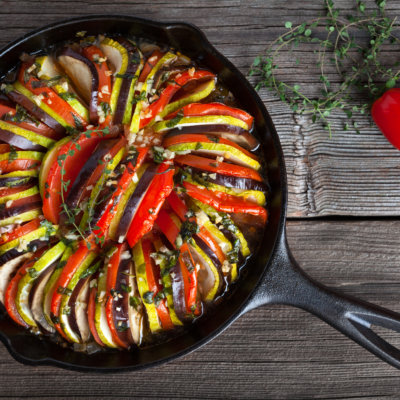
Ratatouille
Ingredients
- 2-3 fresh tomatoes pureed with a pinch of sea salt
- 2 Tbsp olive oil divided
- 3 tsp fresh thyme basil, parsley, and/or oregano, finely chopped
- 1 eggplant
- 1 small zucchini
- 1 small yellow/summer squash
- 1 shallot finely chopped
- 1 garlic clove finely chopped
- 2-3 small plum tomatoes
- 1 ⁄2 red bell pepper seeds removed
- Sea salt and pepper
- Optional: Cast-iron skillet
Instructions
- Preheat oven to 400°F. Pour tomato puree, 1 tablespoon of olive oil and half of the chopped fresh herbs into a baking dish. Stir in the chopped shallot and garlic.
- Season the mixture with salt and pepper.
- Thinly and evenly slice the vegetables using either a mandolin or knife - whichever you're more comfortable with. The thinner the slices, the better the final product will be.
- Stack about 20 slices in sequence in a pan. You can use any pan, but skillets work best, and cast-iron skillets really make a nice end product (see cover photo).
- Arrange a few stacks at a time into the prepared baking dish in a concentric spiral from the outer edge to the inside, fanning them out a bit so that you can see the top 1/8” of all the slices. These will stack better and save more space if they aren't flat, but rather are tilted upward a bit over a small space (think of how napkins stand up in a napkin holder). Use the larger slices for the outside, and swirl around the pan. Use the smaller bits for the middle.
- Drizzle with the remaining tablespoon of olive oil and season with more salt and pepper. Sprinkle the remaining chopped herbs. Cover the dish with a piece of parchment paper cut to it just inside the dish rim, directly on top of the vegetable arrangement.
- Bake for 45 minutes, or until the vegetables are soft

